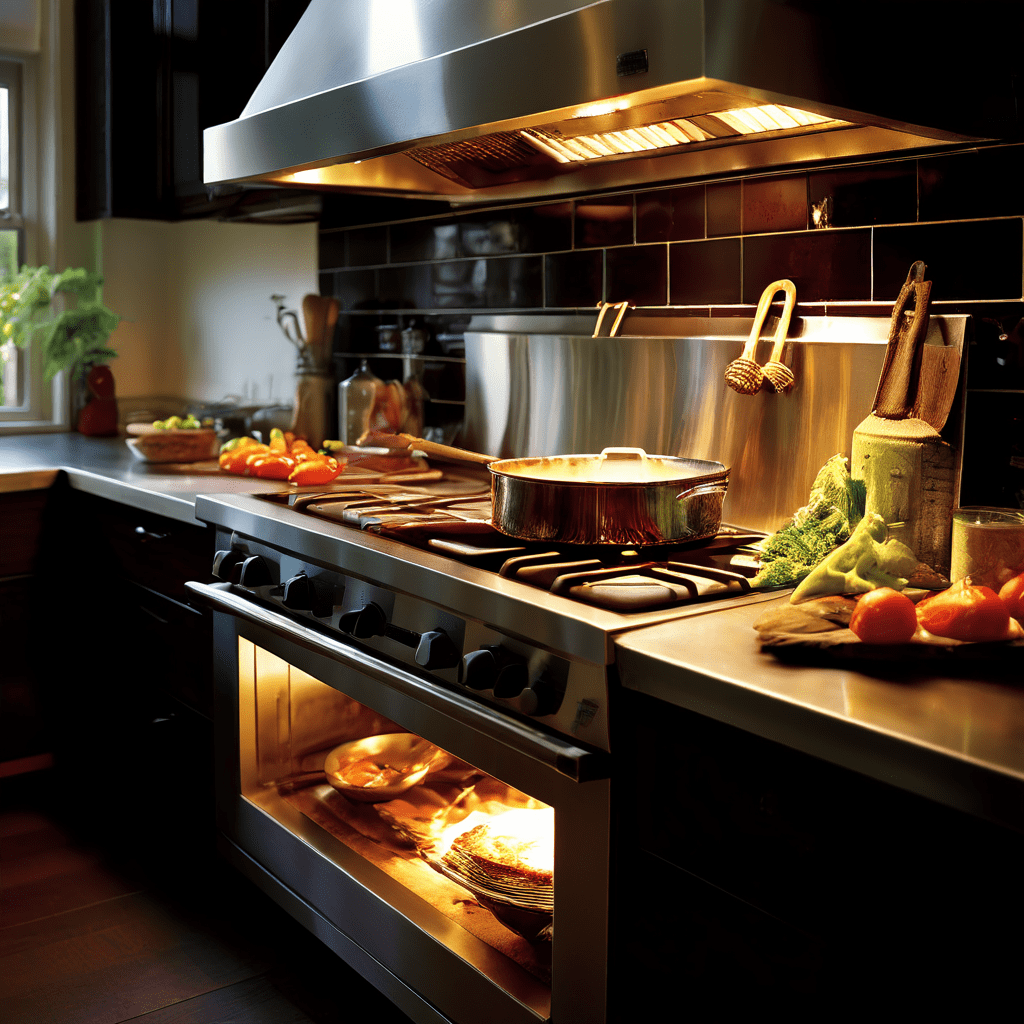Table of Contents

Introduction
Are skyrocketing energy bills putting a serious strain on your wallet? You’re definitely not alone. Millions of homeowners and renters are feeling the pinch of rising energy costs. But here’s the good news: you don’t have to break the bank to make a real difference in your energy consumption.
With a few simple changes around your home, you can slash those energy bills and put more money back in your pocket. The best part? These energy-saving tips are not only easy on your budget, but they’re also kind to the environment.
1. Light Up Your Life – Efficiently
- Switch to LEDs: Make the bright switch to LED bulbs! While they might have a slightly higher price tag initially, they’re worth every penny. LEDs last up to 25 times longer and use a whopping 75% less energy than old-school incandescent bulbs. That means you’ll be replacing bulbs less often and enjoying significantly lower electricity bills.
- Natural Light: Don’t underestimate the power of the sun! Open those curtains and blinds during the day and let natural light flood your home. It’s a free and renewable source of energy that can brighten up your space and reduce your reliance on artificial lighting.
- Smart Lighting: Get smart about your lighting! Consider installing motion-sensor lights in areas like hallways, entryways, and closets. These lights automatically turn on when you enter and turn off when you leave, preventing unnecessary energy waste. You can also explore smart bulbs and switches that you can control from your smartphone, allowing you to customize lighting schedules and turn off lights remotely if you forget.
- Dimmers: Install dimmer switches for your lights. Dimming the lights not only creates ambiance but also saves energy. Even a slight decrease in brightness can make a noticeable difference in your energy consumption.
- Task Lighting: Instead of lighting up an entire room, use task lighting when possible. Table lamps, desk lamps, and under-cabinet lights provide focused illumination where you need it most, saving energy compared to lighting a whole room.
By incorporating these additional tips, you can further optimize your lighting and save even more on your energy bills while enjoying a well-lit and comfortable home.
2. Vampire Power: The Silent Energy Drain That’s Sucking Your Money

Did you know your electronics could be secretly draining your energy and inflating your bills? This phantom energy use, also known as “vampire power” or “standby power,” happens when devices continue to draw electricity even when they’re turned off or in standby mode. Chargers, TVs, computers, gaming consoles, and even appliances with digital displays are notorious culprits.
Here’s how to stop these energy vampires from sucking the life (and money) out of your home:
- Unplug Electronics: The simplest way to save money on energy bills is to unplug chargers, appliances, and electronics when you’re not using them. It might seem like a small step, but it can add up to significant savings over time.
- Smart Power Strips: These innovative devices are a game-changer when it comes to defeating vampire power. Smart power strips allow you to easily control power to multiple devices with a single switch. Some even have advanced features like timers, allowing you to schedule when devices turn on and off.
- Advanced Power Strips: Look for power strips with “auto-switching” features. These strips sense when a device goes into standby mode and automatically cut power to it, eliminating vampire power altogether.
- Energy Monitoring Devices: Consider investing in an energy monitoring device or a smart plug. These devices track your energy usage and can help you identify which devices are the biggest energy hogs, even when they’re turned off.
By tackling vampire power head-on, you can take a bite out of your energy bills and enjoy substantial savings. Don’t let those sneaky devices drain your wallet!
3. Heating and Cooling: Finding the Sweet Spot to Save on Energy Bills
Your heating and cooling system is often the biggest energy hog in your home, but with a few smart adjustments, you can slash those costs and find the perfect balance of comfort and savings.
- Programmable Thermostat: Your Energy-Saving BFF A programmable thermostat is like having a personal assistant for your home’s temperature. You can program it to automatically lower the temperature when you’re away or sleeping and raise it again before you wake up or return home. Even a few degrees difference can translate to significant savings on your energy bills over time.
- Weatherstripping and Caulking: Seal the Deal on Savings Drafty windows and doors are money pits, letting precious heat escape in the winter and cool air leak out in the summer. Sealing those gaps with weatherstripping and caulking is an easy and affordable DIY project that can make a big difference in your energy bills.
- Regular HVAC Maintenance: Keep Your System in Tip-Top Shape Think of your heating and cooling system like a car – it needs regular tune-ups to run efficiently. Scheduling annual maintenance for your HVAC system ensures that it’s running at peak performance, using less energy to heat or cool your home, and saving you money in the long run.
- Energy-Efficient Windows and Doors: A Long-Term Investment If your windows and doors are old and drafty, consider replacing them with energy-efficient models. While this is a larger investment upfront, it can pay off in significant energy savings over time, making your home more comfortable year-round.
- Ceiling Fans: Circulate Savings Ceiling fans are an energy-efficient way to improve air circulation and comfort in your home. In the summer, they can create a cooling breeze, allowing you to raise the thermostat a few degrees and save energy. In the winter, reversing the fan direction can help distribute warm air more evenly.
- Window Coverings: Block the Sun’s Heat During the summer, close blinds, curtains, or shades on windows that receive direct sunlight. This simple step can significantly reduce heat gain, easing the burden on your air conditioner and saving you money.
- Smart Vents: Control Your Comfort Zones Smart vents allow you to adjust airflow to different rooms based on your needs. This means you can heat or cool the rooms you’re using while reducing airflow to unoccupied areas, leading to energy savings.
By implementing these additional tips, you can transform your heating and cooling system into an energy-saving powerhouse, keeping you comfortable while slashing your utility bills.
4. Water Works: Slash Your Energy Bills While Saving H2O
Did you know that saving water can also help you save money on energy bills? It’s true! Heating water accounts for a significant portion of your energy consumption, so reducing your water usage, especially hot water, is a smart way to cut costs.
- Shorter Showers, Lower Bills: Long, luxurious showers might feel great, but they’re not so great for your energy bills. Challenge yourself to take shorter showers – even shaving a few minutes off your routine can lead to noticeable savings on your energy bills over time. A low-flow showerhead can further reduce water and energy usage.
- Fix Leaks, Save Money: That dripping faucet or leaky toilet might seem like a minor annoyance, but it’s a major drain on your energy bills. Even a small leak can waste thousands of gallons of water (and the energy used to heat it) each year. Repairing leaks promptly can help you save money on energy bills and conserve water.
- Energy-Efficient Appliances for Maximum Savings: When it’s time to replace your dishwasher or washing machine, look for models with high energy-efficiency ratings. These appliances use less water and energy, saving you money on your energy bills while reducing your environmental impact.
- Wash in Cold Water, Save on Energy Bills: Most of the energy used to wash clothes goes towards heating the water. Switch to cold water washes whenever possible, and you’ll see a noticeable drop in your energy bills.
- Run Full Loads, Reduce Energy Waste: Dishwashers and washing machines use roughly the same amount of energy regardless of load size. Wait until you have a full load before running these appliances to maximize efficiency and minimize energy waste, which can translate to savings on your energy bills.
- Insulate Hot Water Pipes to Save Energy: Adding insulation to your hot water pipes helps prevent heat loss, which means your water heater won’t have to work as hard to maintain the desired temperature. This translates to less energy consumption and lower energy bills.
- Low-Flow Faucet Aerators for Efficiency: These simple devices attach to your faucets and mix air with the water, reducing the amount of water used without sacrificing water pressure. They’re an easy and inexpensive way to save money on energy bills by reducing water usage and the energy required to heat it.
By implementing these water-saving strategies, you can reduce your hot water usage, lower your energy bills, and contribute to a more sustainable future.
5. Kitchen Confidential: Cooking Up Energy Savings
Your kitchen is a hotbed of energy use, but with some savvy strategies, you can transform it into a money-saving machine. Let’s uncover some culinary secrets for shrinking your energy bills:

- Right-Size Your Burners, Right-Size Your Bills: Using a burner that’s too big for your pot or pan is like trying to fill a bathtub with a garden hose – it takes longer and wastes a lot of energy. Matching your cookware to the burner size ensures efficient heat transfer and can save you money on your energy bills.
- Oven Efficiency: Bake Up Some Savings: Your oven is a major energy consumer, so maximize its efficiency to minimize your costs. If you’re baking multiple dishes, try to cook them simultaneously. This not only saves time but also reduces the amount of energy your oven needs to heat up. Also, resist the urge to peek inside the oven frequently. Every time you open the door, heat escapes, forcing the oven to work harder and use more energy to maintain the temperature.
- Air-Dry Dishes, Let Nature Do the Work: Skip the heated dry cycle on your dishwasher and let your dishes air-dry instead. This simple change can save you money on energy bills every time you run the dishwasher. If your dishwasher doesn’t have an air-dry setting, simply open the door after the final rinse to let the dishes dry naturally.
- Microwave Magic: The microwave is a surprisingly energy-efficient appliance. When cooking or reheating smaller portions, opting for the microwave instead of the oven or stovetop can save energy and money.
- Slow Cooker Savings: Slow cookers are another energy-efficient kitchen tool. They use less energy than ovens and stovetops, and they can cook delicious, comforting meals while you’re away at work or running errands.
- Smart Appliances: Investing in smart appliances can be a game-changer for energy efficiency in the kitchen. Smart refrigerators, for example, can optimize cooling based on usage patterns, while smart ovens can adjust cooking times and temperatures for optimal energy use.
- Mindful Meal Prep: Planning your meals in advance allows you to consolidate cooking tasks and minimize oven or stovetop use. For example, you could roast vegetables for the week while you’re baking a casserole, reducing the need to heat the oven multiple times.
By incorporating these energy-saving cooking tips into your kitchen routine, you can whip up delicious meals while keeping your energy bills in check. Your wallet and the planet will thank you!
Bonus Tip: Don’t Miss Out on Energy-Saving Incentives That Can Slash Your Bills
Did you know you could be leaving money on the table when it comes to saving energy? Many utility companies and government programs offer rebates, tax credits, and other incentives to homeowners who make energy-efficient upgrades to their homes.
- Cash Back for Efficiency: Some utilities offer rebates or cash back when you purchase energy-efficient appliances, install smart thermostats, or make other qualifying improvements.
- Tax Credits for Savings: Government programs often provide tax credits for energy-saving home improvements, such as installing solar panels, energy-efficient windows, or insulation. These credits can significantly reduce your tax burden and boost your overall energy bill savings.
- Free Energy Audits: Many utility companies offer free or discounted energy audits to help you identify areas where your home could be more energy-efficient. These audits can provide valuable insights and recommendations to save money on energy bills.
- Weatherization Assistance Programs: Low-income households may qualify for weatherization assistance programs that offer free or discounted energy-saving upgrades, such as insulation, air sealing, and heating system repairs.
Taking advantage of these incentives is like getting a bonus on your energy savings. It’s a smart way to reduce your upfront costs for energy-efficient improvements and accelerate your return on investment.
Pro Tip: Research the specific programs and incentives available in your area. Utility companies and government websites often have detailed information on eligibility requirements, application processes, and available rebates or credits.
Don’t miss out on these opportunities to save money on energy bills while making your home more energy-efficient. It’s a win-win for your wallet and the environment!
Small Steps, Big Impact
Remember, you don’t have to overhaul your entire home at once. Start with a few simple changes and gradually build your energy-saving habits. Every little bit counts! By reducing your energy consumption, you’ll not only save money on your bills, but you’ll also be doing your part to create a more sustainable future.
